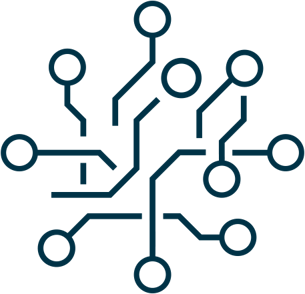The widespread adoption of container and serverless computing technologies has revolutionized how businesses deploy and manage applications. While these advancements offer scalability, efficiency, and cost savings, they also introduce unique security vulnerabilities that require proactive attention. Understanding the importance of cloud data security solutions in this context is paramount for safeguarding the integrity and confidentiality of business applications and data.
Understanding the Cybersecurity Landscape
Container Technology
Container technology is widely acclaimed for its capacity to encapsulate applications within a portable and resource-efficient environment. This innovative technology offers multiple security enhancements compared to traditional architectures, including:
- Enhanced Isolation Mechanisms: Containers leverage the Linux kernel's cgroups and namespaces to provide robust isolation, restricting access to host resources and interactions with other containers, bolstering security.
- Refined Resource Management: System administrators utilize cgroups to allocate specific quotas of CPU, memory, and I/O resources to containers, preventing any single container from monopolizing system resources.
- Streamlined Deployment: Containers' portability allows swift deployment across different computing environments. Container images encapsulate all necessary binaries and dependencies, ensuring consistent functionality across development, testing, and production stages.
However, the architecture of containerization introduces several unique security challenges such as:
| Security challenges | Issue | Impact |
| Container Sprawl and Management Complexities | Deployment ease leads to "container sprawl," where large numbers of containers are deployed without proper tracking or governance. | Difficult to manage security configurations and updates, increasing the attack surface. |
| Vulnerabilities within Container Images and Registries | Dependency on potentially insecure third-party images. | The use of compromised or outdated images introduces security risks. |
| Runtime Security and Orchestration Layer | The container runtime and orchestration layers, particularly with platforms like Kubernetes, are critical to maintaining container security. | Misconfigurations or vulnerabilities within the orchestration layer can lead to unauthorized access and breaches. |
| Insecure Configuration and Defaults | Default configurations of container deployments are often not secure, potentially leaving open vulnerabilities. | These configurations can lead to the exposure of sensitive data, unauthorized data access, and system breaches if not properly adjusted. |
Serverless Computing
Serverless computing, which allows businesses to run applications and services without managing the underlying infrastructure, significantly alters the security paradigm. While it offers scalability and cost-efficiency, serverless computing introduces its own set of security challenges:
| Security challenges | Issue | Impact |
| Increased Attack Surface due to Third-party Services and APIs | Serverless architectures often rely on multiple third-party services and APIs, which can introduce security vulnerabilities. | This reliance increases the attack surface as each external service potentially brings its own set of vulnerabilities that can affect the serverless application. |
| Managing Permissions and Identities | Serverless functions often require permissions to access other cloud services, making their configuration complex, especially in a multi-tenant environment. | Incorrectly configured permissions can lead to excessive privileges that may be exploited by malicious actors. |
| Security of Serverless Code | The serverless model exacerbates certain risks, as malicious code can be more challenging to detect and isolate when it runs in stateless compute containers. | Vulnerabilities within the code or dependencies can be exploited at runtime, potentially leading to data breaches or unauthorized access. |
| Event-driven Security Concerns | Serverless architectures are typically event-driven, responding to HTTP requests, database events, queue messages, etc. | This can lead to unpredictable usage patterns and potential security vulnerabilities if event inputs are not properly validated. |
| Inadequate Logging and Monitoring | The ephemeral nature of serverless functions can complicate logging and monitoring, making it challenging to trace malicious activity or performance issues. | Without comprehensive logging, detecting and responding to security incidents becomes difficult, potentially leaving breaches unaddressed. |
Strategies to Navigate Through Security Challenges
Securing Container Environments:
- Enhanced Container Lifecycle Management:
Employing container management platforms such as Kubernetes or Docker Swarm is crucial for maintaining an organized overview and exerting control over extensive clusters of containers. These platforms facilitate effective scaling and management operations, helping to mitigate the risks associated with container sprawl. - Integrity Assurance of Container Images and Registries:
The adoption of rigorous security scanning and management protocols for container images is essential. Tools like container image scanners and configuration management are instrumental in identifying and addressing vulnerabilities prior to deployment. Moreover, employing secure registries, such as Docker Trusted Registry, ensures that images are stored securely, further mitigating risk. - Securing Runtime and Orchestration Configurations:
Securing the runtime environment is pivotal and involves robust API access controls through authentication and authorization mechanisms, utilizing Role-Based Access Control (RBAC) within Kubernetes. Additionally, ensuring that network policies and security controls are properly implemented is crucial to further security enhancements. - Secure Configuration Practices:
Enforcing security best practices and guidelines, such as minimizing base images and using security-enhanced Linux (SELinux) policies, are essential for safeguarding containers. Regular audits of container configurations against industry standards like the CIS Benchmarks for Docker and Kubernetes can also mitigate this risk. - Enhanced Secrets Management:
Implementing secure secrets management solutions ensures that sensitive data is encrypted, securely accessed and appropriately rotated. - Refined Network Segmentation and Traffic Management:
Implementing micro-segmentation strategies and defining precise network policies control container traffic ingress and egress, bolstering security. Tools including service meshes, container orchestration, security platforms provide comprehensive management, security, and monitoring capabilities for container traffic within microservices architectures.
Securing Serverless Environments

- Enhanced Third-party Service and API Security:
Implementing strict API gateway policies, which provides options to manage, authenticate, and authorize API traffic, can mitigate risks. Additionally, regular security assessments of third-party services and integrating security tools designed for API inspection and anomaly detection are crucial. - Streamlined Permission and Identity Management:
Adopting the principle of least privilege (PoLP) and ensuring that functions have only the permissions necessary to perform their intended actions is essential. IAM tools allow for fine-grained access control, and services like Azure Active Directory can provide comprehensive identity and access management in serverless environments. - Fortified Serverless Code Security:
Ensuring code security involves multiple layers of defense, including static code analysis tools to detect vulnerabilities during development, and runtime protection mechanisms such as RASP (Runtime Application Self-Protection) that can identify and mitigate attacks in real-time. Dependency management tools can be used to monitor and fix vulnerabilities in software libraries. - Resilient Event-driven Security Practices:
Input validation mechanisms and proper event handling policies must be implemented to mitigate injection attacks and other exploit vectors. Various tools and frameworks have built-in support for input validation, and platforms such as the Serverless Framework support security plugins that enhance event validation. - Comprehensive Logging and Monitoring:
Implementing detailed logging and monitoring using cloud-native solutions is essential. These tools can capture logs from serverless functions, providing visibility and aiding in the forensic analysis of security incidents. - Vendor-independent Security Assurance:
It is crucial to select cloud providers with robust security certifications and to stay informed about their security updates and practices. Conducting regular security assessments and third-party audits can also help ensure that the cloud service provider maintains high-security standards.
Advanced Security Strategies

1. Automation in Security
Security automation is pivotal for managing the security of both containers and serverless computing frameworks. This automation facilitates the continuous assessment of security vulnerabilities and the prompt deployment of security patches and updates. Key benefits include:
- Reduction in Human Error: Automating repetitive security tasks minimizes the chance of oversights and mistakes that can lead to security breaches.
- Adaptation to Rapid Deployment Cycles: As deployment frequencies increase, automated tools ensure that security measures are updated at the same pace, maintaining a secure environment without slowing down operations.
- Continuous Cloud Security Posture Management: Leveraging tools such as real-time threat detection and automated remediation systems helps in maintaining a resilient security posture against emerging threats.
2. Integrating Security into the CI/CD Pipeline
Incorporating security into the Continuous Integration/Continuous Deployment (CI/CD) pipeline is critical for early detection and mitigation of vulnerabilities during software development. This integration involves components such as:
- Security Testing: Implementing automated security testing tools, such as static application security testing (SAST) and dynamic application security testing (DAST), within the pipeline to identify security flaws before production.
- Compliance Checks: Including automated compliance scanning tools to verify that the code complies with regulatory standards and security policies prior to deployment.
- DevSecOps Practices: Encouraging collaboration between development, security, and operations teams to embed security considerations throughout the development process, enhancing the security of the deliverables.
- Vulnerability Management: Integrating vulnerability scanning tools to continuously monitor and identify vulnerabilities in the code and dependencies. This allows for prompt remediation before any issues can be exploited.
3. Compliance and Governance
Managing compliance in container and serverless environments demands a comprehensive grasp of the applicable regulatory frameworks. This involves:
- Understanding regulatory requirements by keeping abreast of changes in data protection laws, industry standards, and specific regulations that impact containerized and serverless operations.
- Implementing governance frameworks that ensure all deployments are reviewed for compliance with legal and industry standards, thereby protecting sensitive data and securing consumer confidence.
- Utilizing tools that automatically enforce governance policies and log compliance evidence can streamline the process of proving adherence to regulatory standards during audits.
Future Trends in Container and Serverless Security
As we look towards the future of container and serverless security, we see several key trends poised to reshape this field. With cyber threats becoming more sophisticated, there is a growing need for security strategies that not only respond to threats but can anticipate them. Artificial Intelligence (AI) and Machine Learning (ML) are leading this shift, providing tools that can predict security breaches by analyzing large datasets to detect unusual patterns. This allows organizations to adopt a proactive approach to security, which is especially useful in the fast-changing environments of container and serverless computing.
Another important development is the adoption of Security as Code (SaC). In the context of container and serverless systems, SaC means defining and managing security policies directly within application code. This integration into the Continuous Integration/Continuous Deployment (CI/CD) pipeline ensures that security considerations are embedded in applications from the beginning and evolve with them. This method supports continuous compliance and governance, crucial as more businesses move towards DevSecOps. This approach integrates security early in the software development process, helping to identify and fix vulnerabilities swiftly. For a detailed look at how this integration can be managed effectively, see Adnovum's automated and connected governance and compliance solutions.
Looking forward, the security of container and serverless platforms will increasingly depend on these innovative technologies and methodologies. By integrating security solutions throughout the development lifecycle, organizations can ensure that their operational agility is matched by robust security measures, driving business success.
Engaging with cloud security consulting services offers businesses expert guidance on securing their cloud infrastructure. These services include strategic planning, risk assessments, and the implementation of best practices to strengthen cloud environments. Connect with Adnovum's specialist to take a critical step towards a secure digital transformation.






